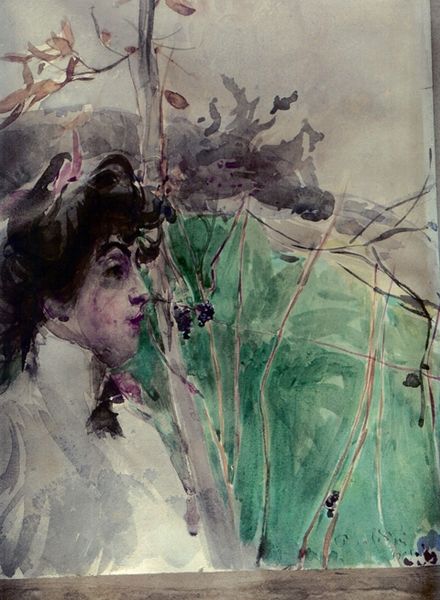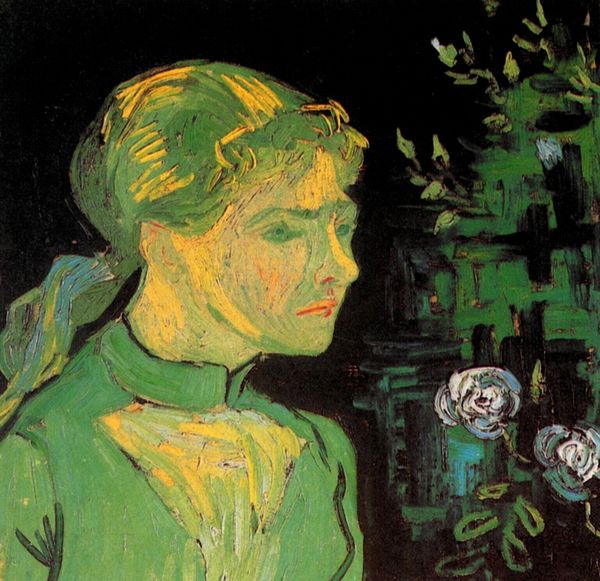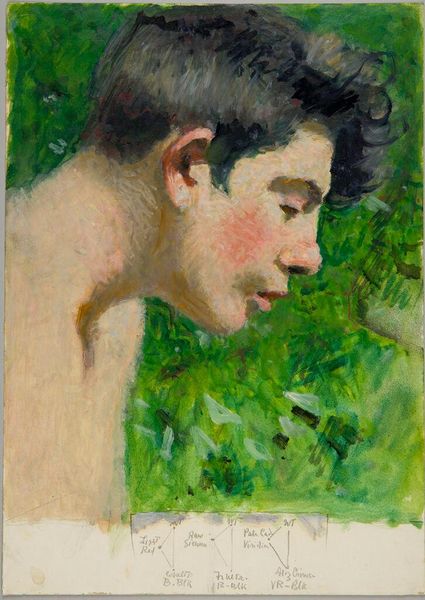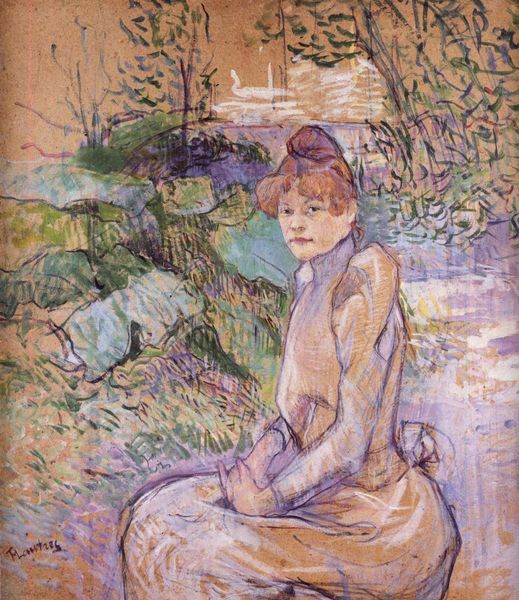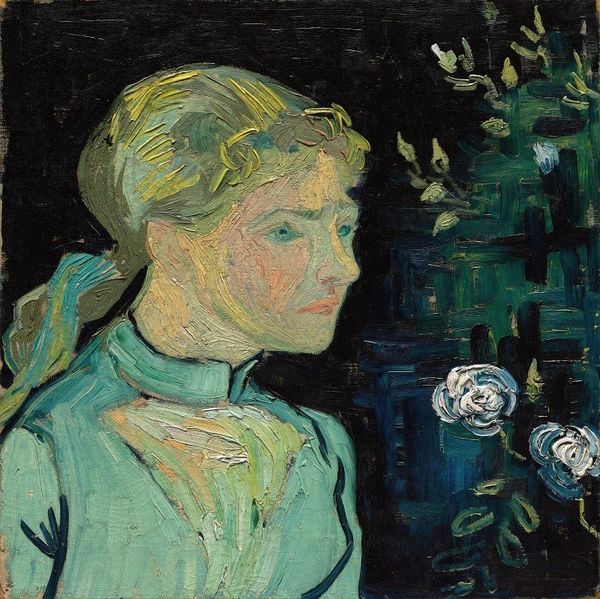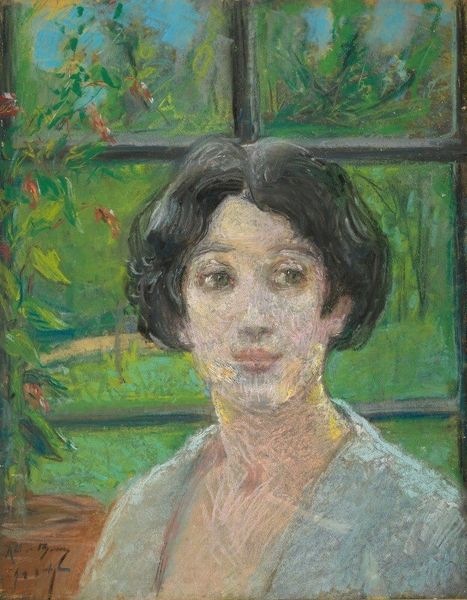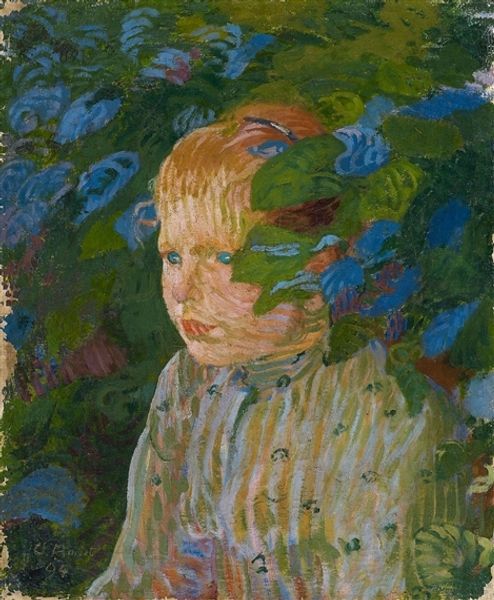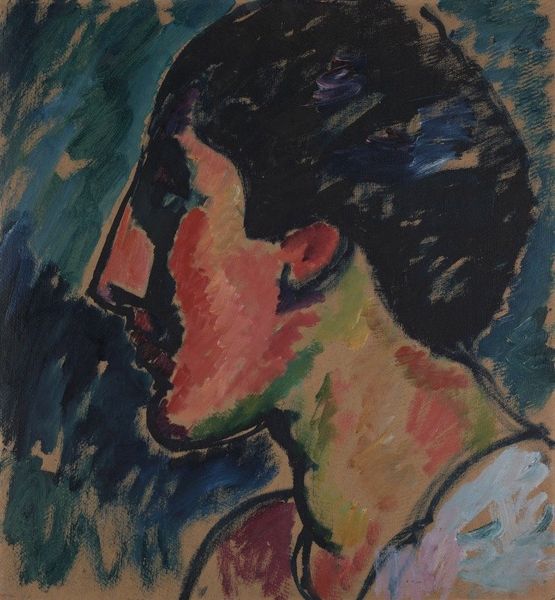
painting, oil-paint
#
portrait
#
tree
#
painting
#
canvas painting
#
oil-paint
#
figuration
#
intimism
#
genre-painting
#
post-impressionism
Dimensions: 55 x 46 cm
Copyright: Public domain
Curator: Toulouse-Lautrec's "The Greens (Seated Woman in a Garden)," created in 1891, presents us with a captivating figure amidst lush foliage, painted with oil on canvas. What strikes you most immediately? Editor: Well, first, I love the vibrant, almost chaotic, garden setting contrasted against the woman’s pensive mood. It’s like she’s caught in a moment of quiet reflection, while all this life explodes around her. The slightly sourceless light gives the work a dreamlike, and yet stifling atmosphere to me. Curator: It's interesting you note the vibrancy, as his choice to render the scene reflects a strategic employment of color and composition techniques characteristic of Post-Impressionism. Lautrec deliberately employs a combination of rapid brushwork, along with thin paint applications to convey an environment marked by immediacy and informal expression. It appears rather spontaneous, no? Editor: Yes, precisely, and that immediacy invites intimacy, almost as if we're intruding on her private moment. What I find equally intriguing is the way Lautrec seemingly abandons precise detail in favor of conveying the sheer atmosphere, blurring the lines of distinction between the human figure and her surrounding environment. Don’t you think it echoes those Impressionist attempts to catch that very fleeting experience of a lived moment? Curator: Agreed. The visible canvas adds to that feeling; however, unlike Impressionism that primarily observes fleeting natural effects, Lautrec imbues a modern perspective of the period’s social alienation that resonates more emphatically than some other Impressionist examples. We might see how this connects to the materials available for mass consumption and the impact of the ready-made that would later influence artists in the early twentieth century. Editor: Hmm. That reading could apply in how the flattening of perspective almost merges figure and background, conveying how external and internal forces might overwhelm any feeling of control or individualism. The woman becomes, as a result, merely one component or feature within a much wider scene. Curator: Yes, the painting's power lies not just in what we see but in its broader societal connections, offering insight into both its physical creation and thematic purpose. What are your final thoughts then? Editor: I’d say it captures this melancholic tension between beauty and unease. The painting leaves me pondering the human capacity to adapt to a society undergoing rapid modernization during that historical era.
Comments
No comments
Be the first to comment and join the conversation on the ultimate creative platform.


